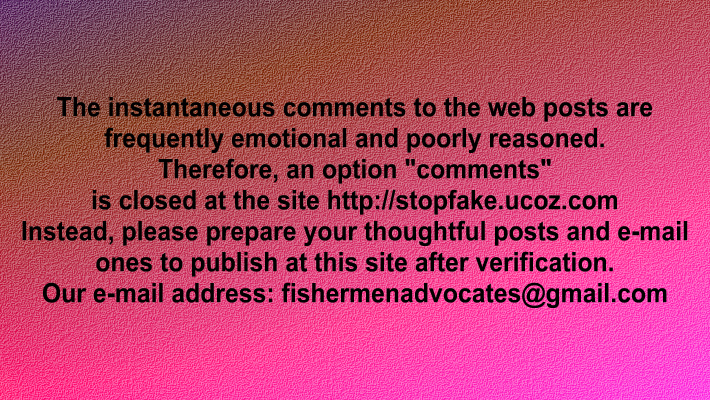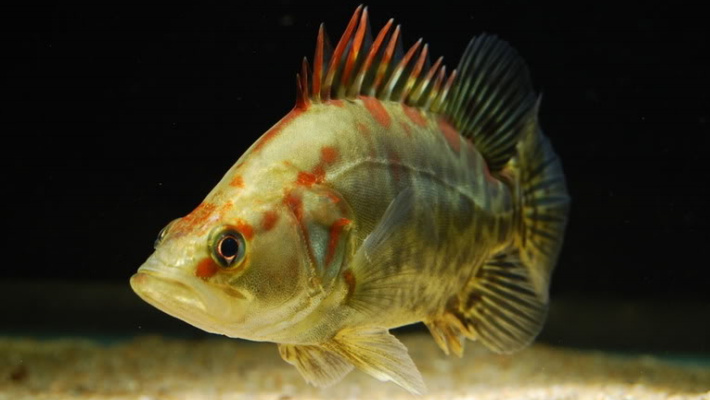|
The
effectiveness of betaine as gustatory feeding stimulant for freshwater and
marine fish is intensively studing. Kasumyan & Døving (2003) have reviewed basic articles published in this area before
2003 year. As shown, betaine is effective as gustatory feeding stimulant for
some fish and is ineffective for others.
Non-reviewed
articles and articles published after 2003 year confirm the foregoing
conclusion.
According
to Barnard (2006), betaine hydrohloride introduced into the dough is attractive
for Japanese koi carp, Cyprinus carpio, at the optimal concentration
of 15,66 ppm.
Gibel carp,
Carassius auratus gibelio, fed the fish meal diets display the higher intake than those fed
the diets with part of meat and bone meal (MBM), but the difference is
significant only in tests on betaine, glycine and methionine (Xue & Cui, 2001). None of
the feeding stimulants tested, namely betaine,
amino acids and commercial squid extract, show feeding enhancing effects in
fish meal diets. All feeding stimulants show feeding enhancing effects in MBM diets,
with the optimal inclusion level of 0,1 % for squid extract and 0,5 % for betaine.
According to data
obtained by Xue & Cui (2001), squid
extract tends to have the strongest effect, amino acids (0,1 % for glycine)
occupy the middle position, while betaine tends to have the weakest feeding
enhancing effect for gibel carp, C.
auratus gibelio.
Venkateshwarlu
et al. (2009) have studied 10 herbal attractants for post larvae of freshwater
giant prawn (Macrobrachium rosenbergii) as well as for fingerlings of
Indian major carps, catla (Catla catla), rohu (Labeo
rohita) and mrigala (Cirrhinus mrigala). The powdered herbal
materials have been inroduced into starch at the 1 % level to make the dough.
It is revealed that post larvae of giant prawn are attracted in greater numbers
towards ekangi, Kaempferia galanga (Zingiberaceae), kakla, Piper cubeba (Piperaceae),
and bhuski (seeds) in comparison with betaine. As for fish, the highest
attractant activities are shown by latkhandhana, Bixa orellana (Bixaceae) on catla, kakla on
rohu, and kharbaz (fruits) on
mrigala, also with the less attractivity of betaine (Venkateshwarlu et al.,
2009).
Basic References
Barnard P. 2006. The effect of betaine hydrochloride
concentrations on chemo-attraction in Japanese koi carp (Cyprinus carpio). In: Gustatory and olfactory feeding responces in
Japanese koi carp (Cyprinus carpio). University of Stellenbosch,
Stellenbosch (South Africa),
45-51
Kasumyan A.O.,
Døving K.B. 2003. Taste
preferences in fishes. Fish and Fisheries
4, 289-347
Venkateshwarlu
G., Muralidhar A.P., Rathod R., Pal A.K. 2009. Plants traditionally used in
fish harvest & angling potential feed attractants in aquaculture. Indian Journal of Traditional Knowledge 8, 539-542
Xue M., Cui Y. 2001. Effect
of several feeding stimulants on diet preference by
juvenile gibel carp (Carassius auratus gibelio), fed diets with or without partial replacement of fish meal by meat and bone meal. Aquaculture 198, 281-292
|








 SUBSCRIBE
SUBSCRIBE


